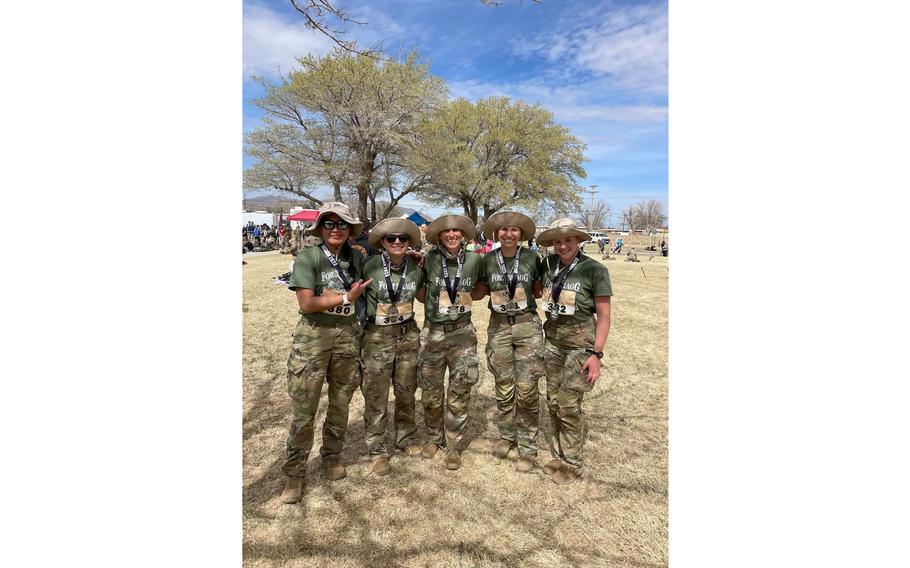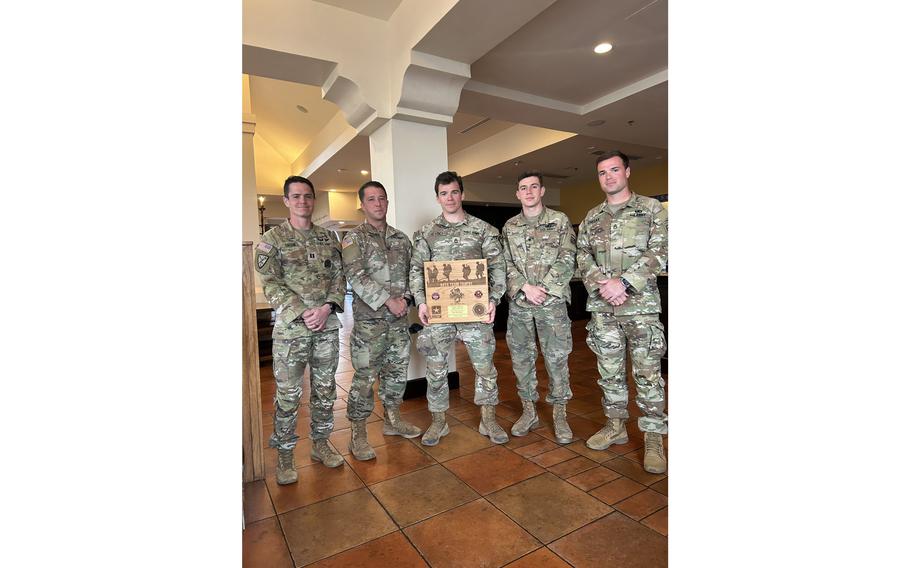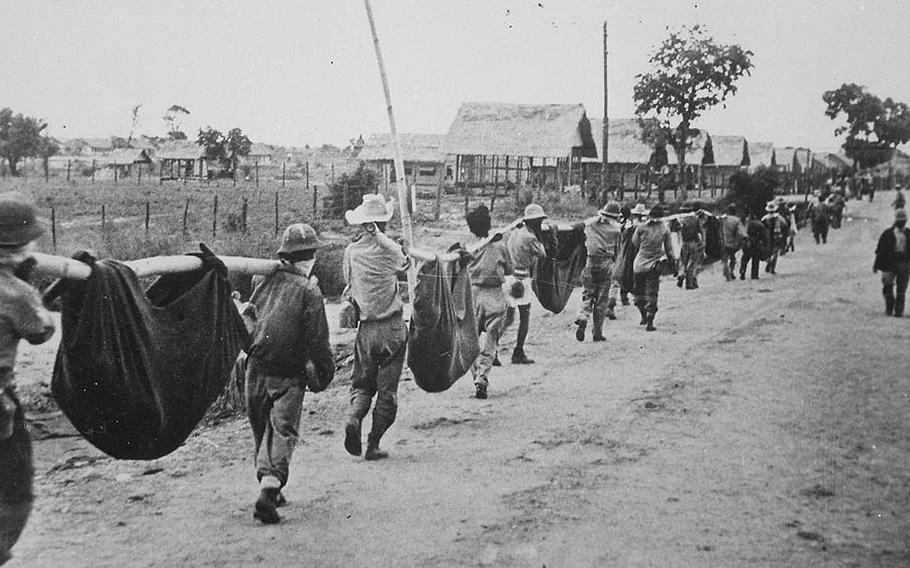
The Fort Bragg Women’s Bataan Memorial Death March Team stands together after claiming victory in the military heavy division of the 34th Bataan Memorial Death March, Sunday, March 19, 2023. (U.S. Army)
Fort Bragg dominated in the Military Heavy Division of the 34th Bataan Memorial Death March at White Sands Missile Range, N.M., on March 19.
The men’s team beat out 18 other teams for first place, with an average time of 5:24:01. The women’s team, the only team in the female heavy division, clocked an average time of 7:39:13.
“It was nice to give Fort Bragg a final win before its name gets changed,” said Sgt. 1st Class Justin Kearney, leader of the Fort Bragg men’s team, in an Army news release announcing the winning teams. “I’m glad our team was able to do well.”

The Fort Bragg Men’s Bataan Memorial Death March Team stands together after claiming victory in the military heavy division of the 34th Bataan Memorial Death March, Sunday, March 19, 2023. (U.S. Army)
Staff Sgt. Justin Doherty of U.S. Army Special Operations Command, Staff Sgt. Cody Chesak of the 82nd Airborne Division, and Pfc. Arturo Drake of the 82nd Airborne Division made up the men's team. Team captain 2nd Lt. Annalise Frenette with the 27th Engineer Battalion led the women’s team. It included 1st Lt. Laura Pingrey with the 330th Movement Control Battalion, Sgt. 1st Class Cholpon Atabekova with the 92nd Civil Affairs Battalion, Sgt. Chelsea Catalone with the 82nd Airborne Division and Spc. Courtney Haye with the 82nd Airborne Division.
The annual marathon — “More than just a marathon,” as its website proclaims — commemorates the U.S. and Filipino service members who defended the Philippine islands during World War II.
The Bataan Death March began April 9, 1942, the day U.S. Army Gen. Edward P. King surrendered to Japanese Gen. Masaharu Homma in the Battle of Bataan. The Japanese forced 75,000 soldiers — including about 12,000 Americans and 63,000 Filipinos — to walk north from the Bataan peninsula to Camp O’Donnell in Tarlac Province 65 miles away, according to a U.S. Army history page.
On the march, the soldiers received little food or water and were shot if they fell, attempted escape or stopped for water at a puddle or roadside spigot. Between 7,000 and 10,000 soldiers were killed on the march, according to the Army.

A burial detail of American and Filipino prisoners of war uses improvised litters to carry fallen comrades at Camp O’Donnell, Capas, Tarlac, 1942, following the Bataan Death March. (National Archives)